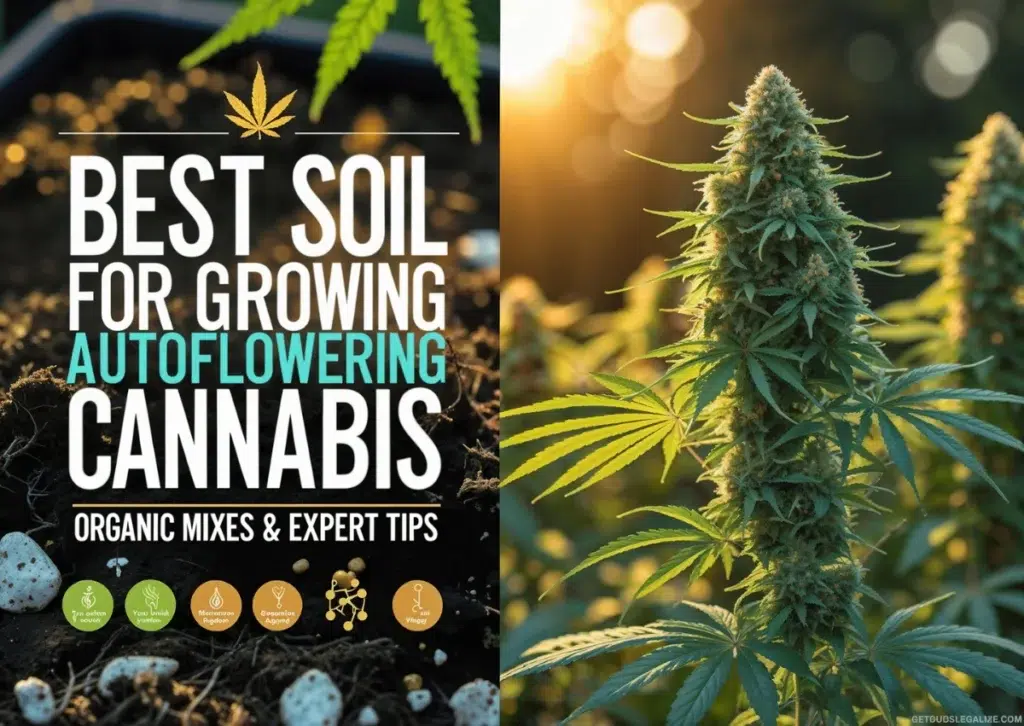How To Mainline Cannabis Plants: Step-By-Step Guide
If you are looking for a way to increase the yield and quality of your marijuana plants, you might want to consider mainlining. Mainlining is a plant training technique that involves creating a symmetrical and even canopy of colas by training the plant to grow multiple main stems. In this blog post, we will explain what mainlining is, how it works, and how to do it step-by-step.
Mainlining and Manifold Cannabis: What Do They Mean?
Mainlining is a term that refers to the process of creating a manifold on a cannabis plant. A manifold is a structure that consists of a single node with two branches that grow out at 90 degrees from the main stem.
The manifold acts as a hub that distributes nutrients and hormones equally to all the branches above it. By creating a manifold, you can train your plant to grow multiple main colas instead of one dominant one. This way, you can maximize the light exposure and airflow to all the buds, resulting in higher yields and better quality.
What Are There Benefits to Mainlining?
Main-lining cannabis has several benefits for growers who want to optimize their plants’ performance. Some of the benefits are:
- Bigger yields: By creating multiple main colas, you can harvest more buds per plant than with a single cola. Some growers report up to a 20% increase in average yield with mainlining.
- Improved quality: By ensuring even light distribution and airflow to all the buds, you can improve the potency, aroma, and flavor of your cannabis. You can also avoid popcorn buds and larf that are usually found at the lower parts of the plant.
- Reduced height: By limiting the vertical growth of your plant, you can keep it short and bushy. This is ideal for indoor growers who have limited space or height restrictions. You can also reduce the need for pruning and topping your plant.
- Easier maintenance: By creating a uniform and symmetrical canopy, you can simplify your plant care routine. You can water, feed, and defoliate your plants more easily and efficiently. You can also avoid issues like nutrient burn, overwatering, or pests and diseases.
Do You Need a Net to Mainlining Cannabis Plants?
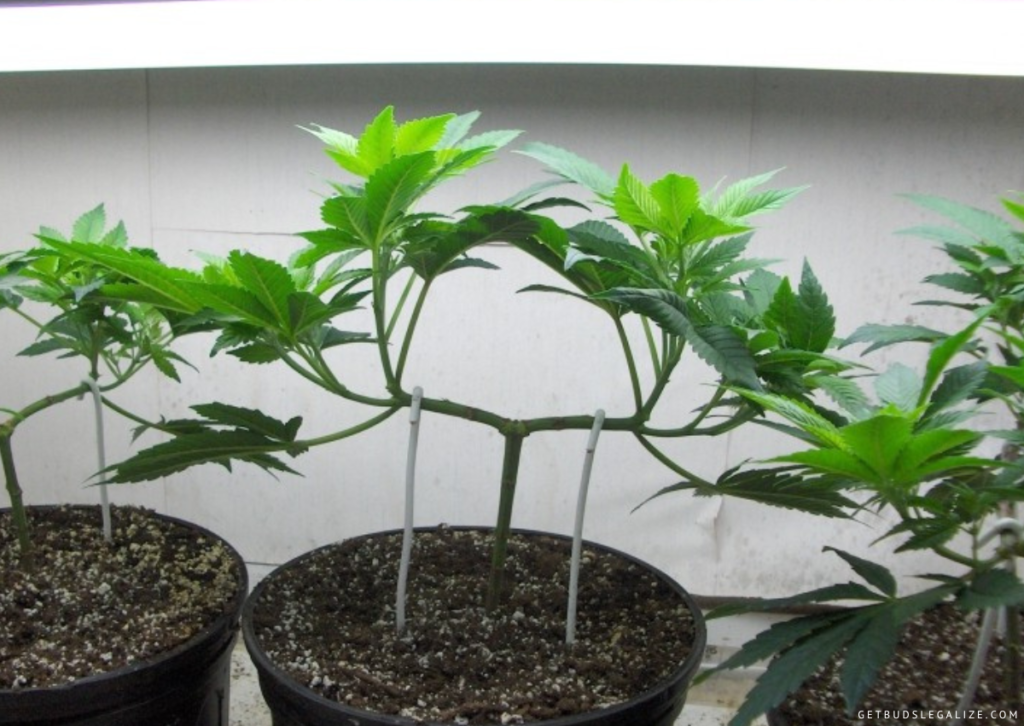

A net or trellis is not necessary to mainline cannabis, but it can be helpful in some cases. A net or trellis can provide support and stability to your plants, especially if they have long and heavy colas. It can also help you spread and arrange your branches more evenly and efficiently. A net or trellis can also prevent your plants from falling over or collapsing due to their own weight.
If you decide to use a net or trellis, make sure you install it before you start mainlining your plants. This way, you can train your branches to grow through the holes of the net or trellis as they grow. You can also adjust the height of the net or trellis as needed to accommodate the growth of your plants.
How Do You Know If Your Plants Are Ready for Mainlining?
The answer depends on the cannabis strains and the growth conditions of your plants, but generally speaking, you want to start mainlining when your plants have at least 5-6 nodes. Nodes are the points where branches or leaves emerge from the main stem. You can count them from the bottom up, excluding the cotyledons (the first pair of round leaves) and the first true leaves (the second pair of single-fingered leaves).
Stop mainlining when your plants have reached 50-75% of their final height. This will depend on the strain, the size of your grow space, and the number of colas you want to create. Generally, you can achieve 8-16 colas per plant with mainlining.
How to Mainline Cannabis Step-By-Step
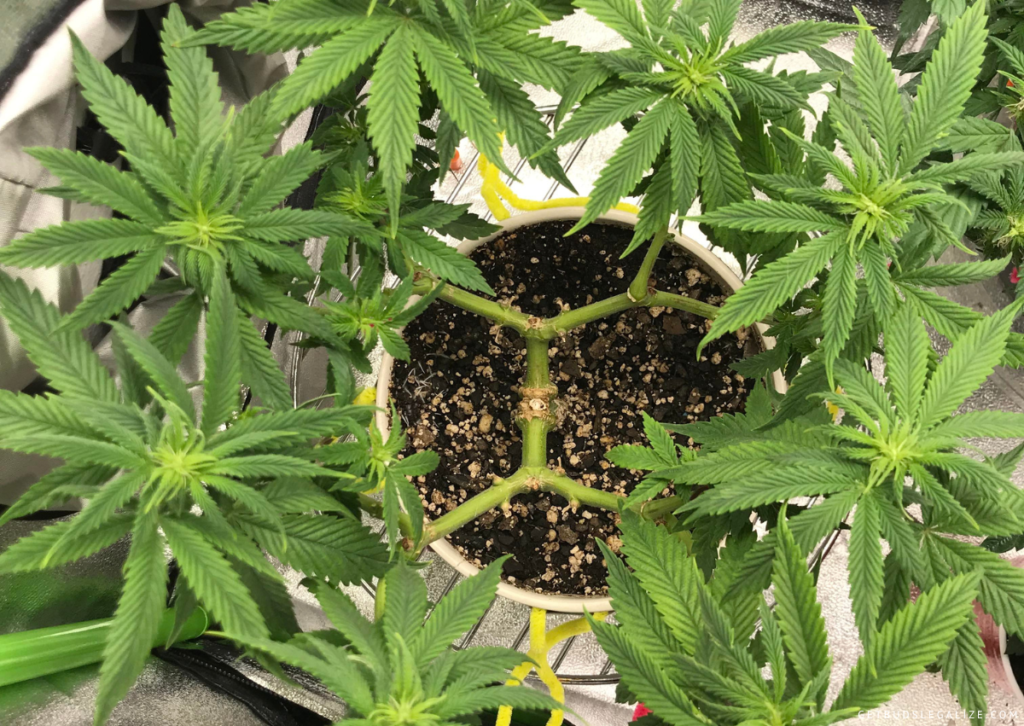
Mainlining cannabis training is not very difficult, but it does require some patience and attention. Here are the steps to follow:
Equipment Needed:
To mainlining cannabis, you will need some basic equipment, such as:
- A sharp pruning shears or pair of scissors and sterile
- Some soft plant ties or wire
- A ruler or measuring tape
- A marker or label
- A net or trellis (optional)
Step 1: Creating A Manifold
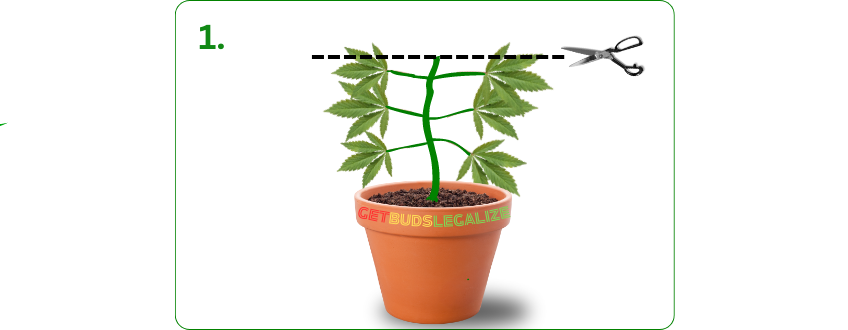
1. Wait until your plant has at least 5-6 nodes (sets of leaves) before you start mainlining. This will ensure that your plant has enough energy and growth potential to handle the stress of pruning.

2. Cut off the top of your plant above the third node using your scissors or pruning shears, and remove all lower branches and leaves. This will leave you with two main branches, allowing your plant to focus all of its energy on them and preventing unwanted growth.
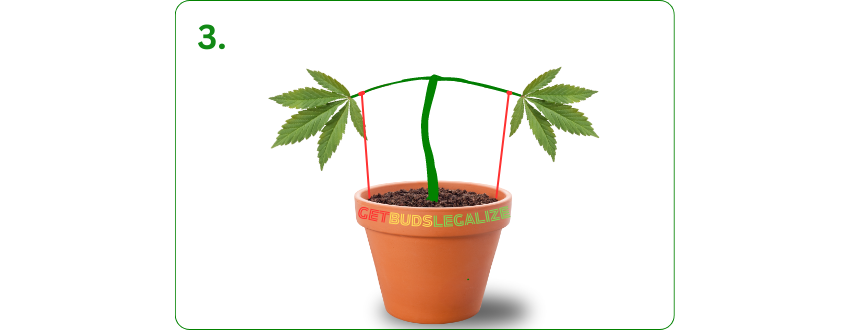
3. Bend the two branches gently downwards and secure them with your plant ties or wire. Make sure they are at 90 degrees from the main stem and parallel to each other. This will create a T-shaped structure that will allow for even light distribution and airflow.
Step 2: Mainlining
The next step to mainline your cannabis plants is to repeat the process of creating manifolds on each main branch until you reach the desired number of colas. Here are the steps to follow:

1. After you have created your first manifold with two main branches, let them grow until they have four sets of leaves each. Then, cut off the top of each branch just above the third node, leaving two sets of leaves on each side. This will create four new branches from your original two.
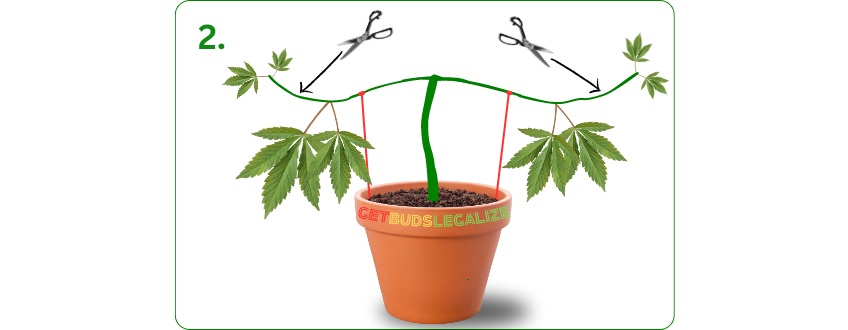
2. On each branch, remove the second node from the bottom, leaving only the first and the third nodes intact. This will create four new shoots on each branch, for a total of eight shoots per plant.
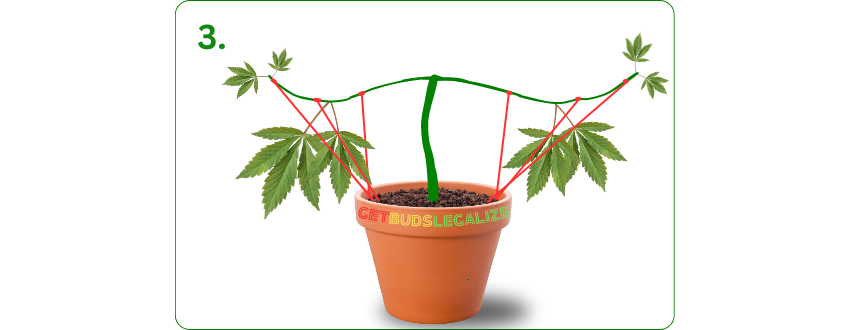
3. Make sure that both central branches are tied down to the side of the pot, and that the base of the new shoots are parallel to the ground. This will ensure that all the shoots grow at the same height and receive equal light exposure.
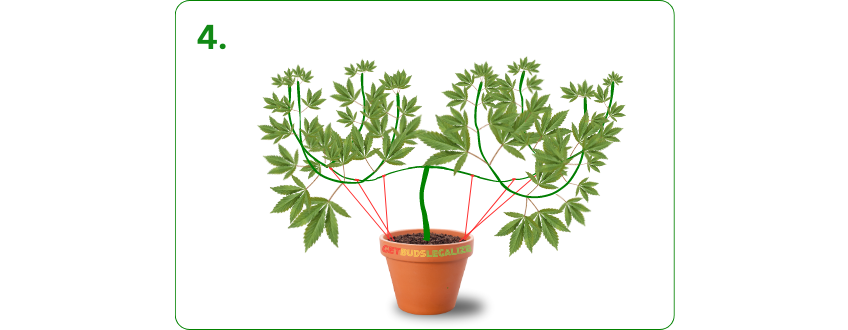
4. Keep checking on your plants twice a week and adjust the ties as needed to maintain a flat and even canopy. Provide your plants with water, nutrients, and light according to their needs.

5. When your plants have reached the desired height (depending on your grow space and preferences), switch them to flowering by changing the light cycle to 12 hours on and 12 hours off.
6. Congratulations! You have successfully mainlined your cannabis plants, and in a few weeks, you will be rewarded with eight dense and uniform colas per plant. During flowering, you can continue to prune and manage your plants as usual.
How Long Does It Take to Mainline a Plant?
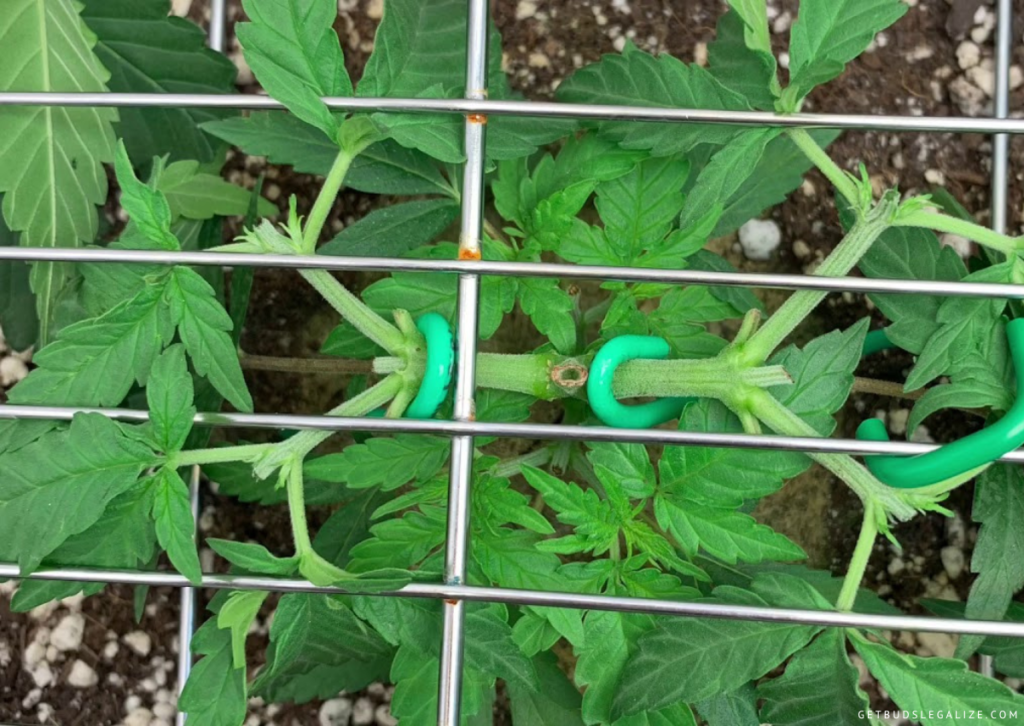
The time it takes to mainline a plant depends on several factors, such as the strain, the growing conditions, and the number of colas you want to create. Generally speaking, it takes about 2-3 weeks for the manifold to form, and another 2-3 weeks for each additional node split.
For example, if you want to create 8 colas per plant, you will need to split each main shoot twice, which will take about 4-6 weeks after creating the manifold. Therefore, the total time for mainlining an 8-cola plant would be about 6-9 weeks.
Cannabis Mainlining vs Super Cropping vs LST
Mainlining is not the only technique that can improve the yield and quality of your plants. There are other training methods that involve manipulating the shape and structure of your plants, such as super-cropping and low stress training (LST). Here are some differences and similarities between these techniques:
• Super-cropping:
Super-cropping is a technique that involves pinching or bending the stems of your plants until they form a knuckle or a bend. This causes stress and damage to the plant tissues, which triggers a healing response that increases the flow of nutrients and hormones to the affected area. This results in thicker and stronger stems that can support more buds.
Super-cropping is similar to mainlining in that it creates multiple colas by redirecting the growth of the plant. However, super-cropping is more flexible and less precise than mainlining. You can super-crop any branch at any time without following a specific pattern or plan. You can also super-crop multiple times during the vegetative or flowering stage.
• Low-Stress Training:
LST is a training method that involves bending and tying the branches of your plants to expose more bud sites to light. This encourages the plant to grow more horizontally than vertically, creating a flat and even canopy of buds.
LST is similar to mainlining in that it creates multiple colas by training the plant to grow in a certain way. However, LST is less invasive and less stressful than mainlining. You do not need to cut or damage any part of the plant when doing LST. You can also do LST throughout the life cycle of the plant without affecting its growth rate.
Tips and Tricks to Run the Mainline Cannabis Perfectly
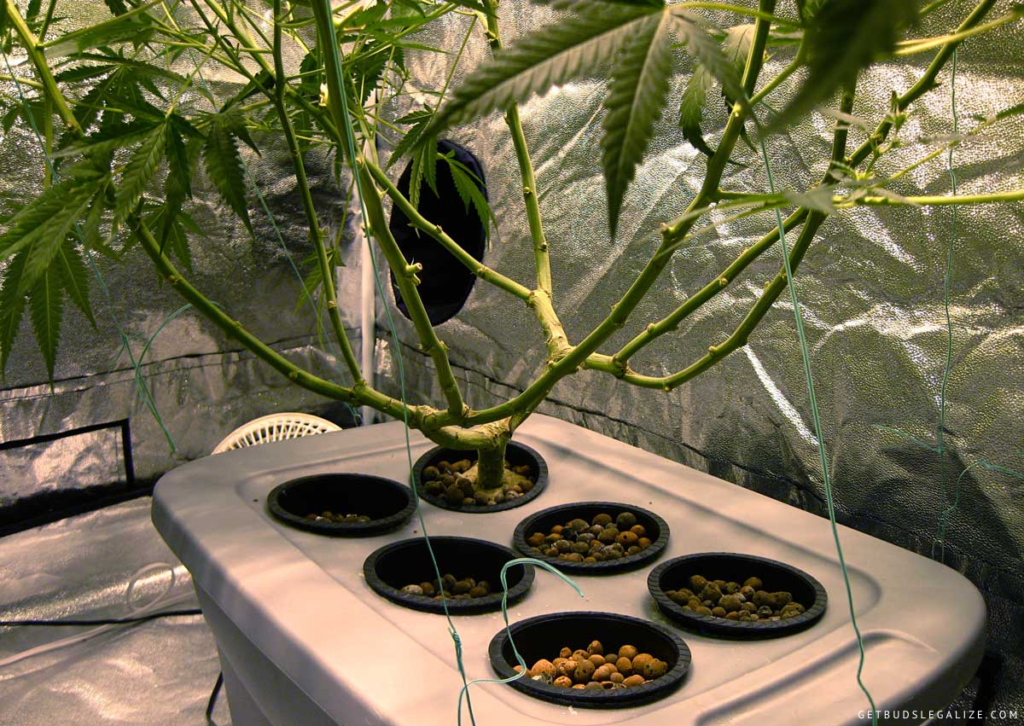
Here are some hints and tips to help you mainline your marijuana plants successfully:
1. Prune fan leaves before or during early flowering: One of the benefits of mainlining is that it exposes all the colas to the light source, maximizing their potential. To enhance this effect, you should prune any excess fan leaves that might block the light or airflow, either before switching to the flowering cycle or within the first two weeks of it.
2. Only mainline healthy plants: Mainlining involves cutting and bending the stems of your plants, which can cause stress and slow down their growth. Therefore, you should only mainline plants that are healthy and vigorous, and avoid doing so if they are sick, weak, or recovering from pests or diseases.
3. Monitor your plants regularly to maintain their shape: Mainlining requires a certain degree of symmetry and balance in your plants, so you should check on them at least twice a week and adjust the ties as needed. You want to keep the branches horizontal and evenly spaced, without letting them grow too long or too short.
4. Seeds are easier to mainline than clones: Mainlining works best with plants grown from cannabis seeds that have a natural tendency to develop symmetrical nodes, as is usually the case with seeds. Clones can have different node development patterns, depending on their genetic background and how they were cut. You may need to use multiple topping and training techniques to get an even variety with your clones.
5. Don’t tie down branches too tightly: When tying down your branches, you should be gentle and careful not to damage them. Use soft plant ties or string instead of wire or cable ties, which can cut into the stems and cause injuries. You should also leave some slack in the ties to allow for some movement and growth.
6. Mainlining works with hydroponics: You can mainline marijuana plants grown in hydroponic systems as well as in soil. However, you should be extra cautious when tying down your branches, as they may not have as much support and stability as in soil. You may need to use stakes or trellis nets to secure them in place.
Should You Try Main-lining Technique?
Mainline cannabis can help you achieve higher yields and better quality, however, it is not for everyone. Mainlining requires some skill, patience, and attention to detail. It also involves cutting off parts of your plant, which can be stressful for both you and your plant.
If you are new to growing marijuana, you might want to start with simpler techniques like LST or super-cropping before trying mainlining. If you are experienced and confident in growing cannabis, you might want to experiment with mainlining and see how it works for you.
Mainlining is not a magic bullet that will guarantee amazing results every time. It is just one of many tools that you can use to optimize your cannabis cultivation. Ultimately, the success of your growth depends on many factors, such as genetics, environment, nutrients, lighting, etc.
We hope this blog post has given you some useful information and if you think to be ready, start mailing today! Happy Growing!
ILGM Fertilizer

- From seedling to harvest, give your plants everything they need.
- Enough for feeding at least 5 plants.
- Discounted Package Deal
- Works well in soil, hydroponics, and other growing mediums.
- The best way to treat your plants
ILGM Plant Protector

- Protect your cannabis from diseases and harmful pests.
- Contains three 20 ml bottles.
- Enough supplies to protect 20 plants.
- It can be used in soil, hydroponic, and all other growing mediums.











